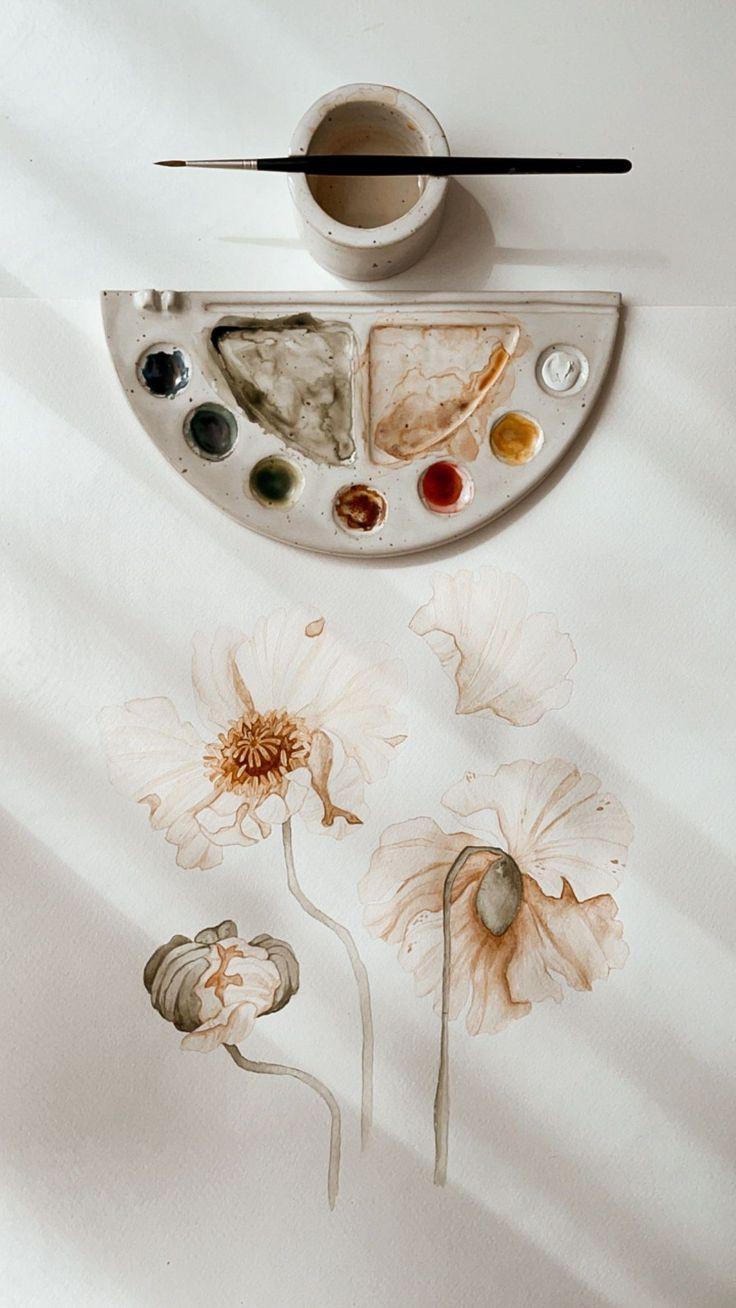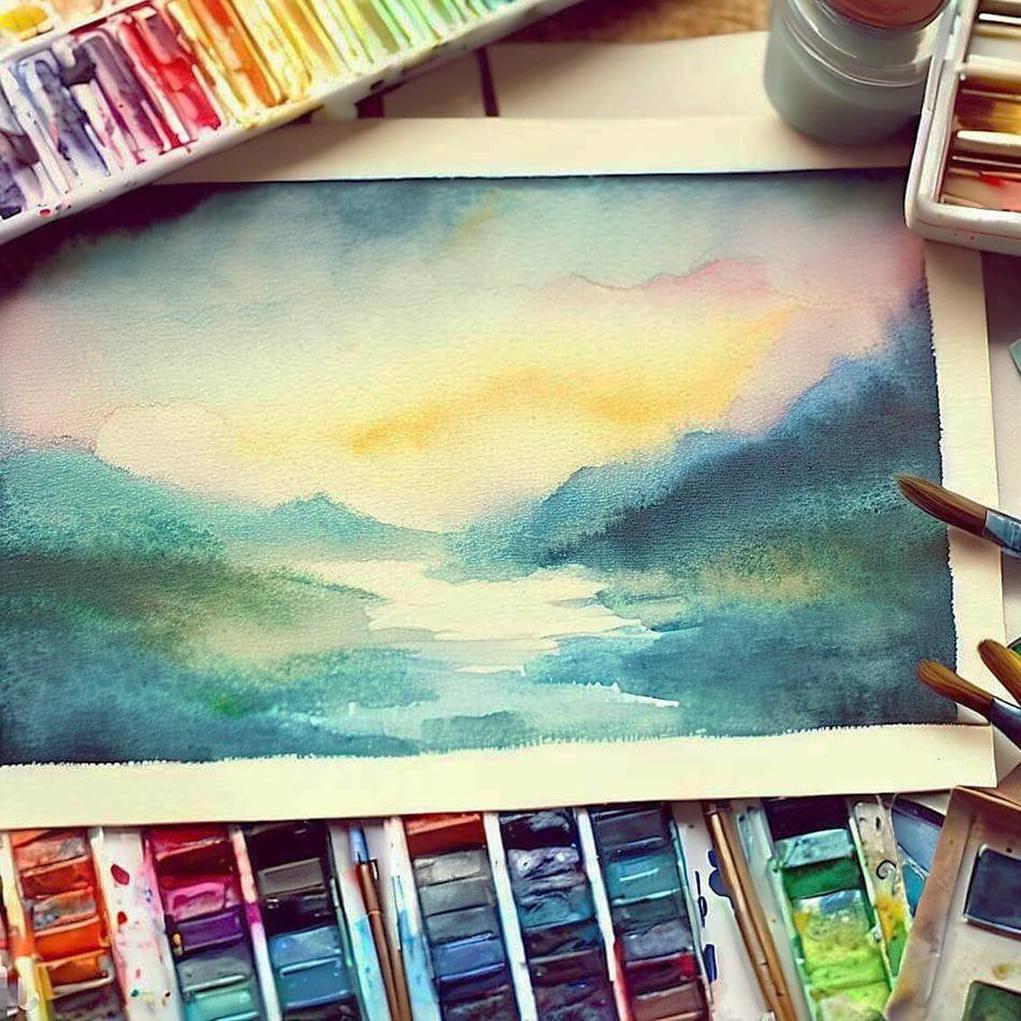#1 Start with Basic Supplies
When gathering your supplies, consider investing in artist-grade watercolor paints, as they offer better pigmentation and lightfastness.
Look for a variety of brushes, including round brushes for versatile use and flat brushes for washes.
When selecting watercolor paper, consider options like Bee Watercolor Paper, which is specifically designed for water-based media. It comes in various textures, such as cold-pressed or hotpressed, providing artists with a reliable surface for their paintings.
Pair it with a range of brushes, including round brushes for versatility and flat brushes for smooth washes, to fully explore your creative potential.
#2 Play with Colors
As you experiment with colors, remember that watercolors are transparent, allowing for layering and mixing. Explore the color wheel and learn about color relationships. Discover how warm and cool tones interact and create harmonious color schemes in your paintings.
#3 Practice Brush Control
Different brush sizes and shapes allow for various brushstrokes and effects. Round brushes are versatile and ideal for most techniques, while flat brushes are great for washes and large areas.
Practice controlling the pressure, angle, and moisture on your brushes to achieve desired effects like soft washes, sharp lines, or dry brush textures.
#4 Understand Water Consistency
Water is a crucial element in watercolor painting. Experiment with the amount of water you mix with your paints to control transparency and saturation. Use more water for lighter washes and dilution, and less water for more vibrant and intense colors. Understanding the balance between water and pigment will help you achieve the desired effects in your paintings.
#5 Embrace Mistakes
Mistakes are a part of the artistic process, and watercolor is forgiving in allowing you to make corrections and adapt to unexpected outcomes.
Embrace accidents as opportunities for creativity.
You can lift paint with a damp brush or a clean cloth, or even incorporate the "mistakes" into your artwork by turning them into happy accidents.
#6 Learn Layering Techniques
Layering is a technique that adds depth and dimension to watercolor paintings. Start with light washes of color and gradually build up layers, allowing each layer to dry before adding the next.
This technique helps prevent colors from mixing too much and turning muddy. Experiment with glazing, where you apply thin, transparent layers to create luminosity and richness in your artwork.
#7 Explore Different Textures
Watercolor paints can create various textures and effects. Dry brushing involves using a relatively dry brush to create a textured, broken line effect. Splattering paint with a loaded brush or flicking it with a toothbrush adds texture and spontaneity to your paintings.
Sprinkling salt on wet paint creates unique textures while using sponges or other unconventional tools can create interesting patterns and effects.
#8 Study References and Seek Inspiration
Look for references and photographs that inspire you. Study the works of other watercolor artists to gain insights into their techniques, color choices, and composition.
Join online communities or local art groups to connect with fellow watercolor enthusiasts and share ideas and feedback. Inspiration can come from anywhere, so keep exploring and observing the world around you.
#9 Practice Regularly
Consistent practice is crucial for honing your watercolor skills. Dedicate regular time to paint, even if it's just for a few minutes each day.
Set goals for yourself, such as experimenting with new techniques or challenging subject matters. Practice will help you gain confidence, develop muscle memory, and improve your understanding of the medium.
#10 Enjoy the Process
Above all, remember to enjoy the journey of watercolor painting. Embrace the unique qualities of watercolors, such as the flow and blending of pigments, the transparency, and the unpredictable nature of the medium. Allow yourself to experiment, take risks, and have fun with your artwork.
The process of creating is just as valuable as the final result, so enjoy the creative exploration and the discovery of your own.

Essential Tips for Beginners in Watercolor Painting





